Healing Begins Here
WHAT IS GESTALT THERAPY?
During gestalt treatment, people typically become more self-aware. They see their negative behaviors and thought patterns. Often, they start to recognize that their behaviors block their true selves. They have no one to blame for their unhappiness but themselves.

HOW GESTALT TREATMENT HELPS PEOPLE WITH ADDICTION
- Low-self esteem
- Anxiety
- Depression
- Migraines
- Back spasms
- Relationship difficulties
More recently, however, experts have taken note of the benefits of gestalt therapy for addiction. First, it helps people with addiction see that the choices they make cause their own unhappiness. Secondly, it helps them with underlying mental illnesses.
Addiction is a mental illness that doesn’t typically appear alone. Another underlying mental illness can spur on the addiction or vice versa. Depression and anxiety are common co-occurring disorders, which gestalt counseling treats. Overall, this psychotherapy is a good choice for a dual diagnosis treatment program.
EXAMPLES OF GESTALT THERAPY TECHNIQUES
Therapists and counselors at a mental health treatment and addiction center use many techniques in this type of therapy to help those fighting substance use. These include:
Roleplay: Through role-playing, individuals understand and experience various emotions. They also observe how they present these emotions to others.
The empty chair: In this technique, the individual sits in front of an empty chair. He or she then imagines that another individual is sitting in this empty chair and starts to communicate with this individual. In the next step, the individual switches chairs and communicates from the perspective of the individual in the empty chair. This activity is highly beneficial in making people recognize different perspectives and how to deal with these differences.
Dream interpretation: The technique asks clients to relive their dreams by assuming the role of other people who appear in the dreams. This also helps patients understand what other people may have been experiencing in the dream.
Interpreting body language: Teeth clenching, muscle tension, or finger tapping are some of the unconscious ways of expressing emotions. This process aims to make an individual more conscious of his or her own body language.
THE GOAL OF GESTALT THERAPY
EXPERIENCING FEELINGS IN THE MOMENT
That’s not to say that people don’t talk about past problems during gestalt treatment. Instead of just talking about them, counselors might have clients act out the moments when the problems took place. While clients act out the problems, therapists or counselors ask how they currently feel.
In fact, role-playing and guided fantasies are often important aspects of gestalt counseling. The goal is for people to get in touch with their true feelings. At the same time, they learn to take responsibility for their behaviors and accept the consequences.

THE EMPTY CHAIR
With the imagery in place, therapists or counselors encourage the clients to talk with it. The conversation typically brings up a lot of emotions.
At some point during the exercise, therapists or counselors reverse the roles. Clients become the objects or people in the empty chair.
The goal of the exercise is to give people a different perspective on their problems. The technique isn’t possible without role reversal.

WE CAN HELP YOU AT CRESTVIEW RECOVERY
- Intensive outpatient treatment
- Rehab aftercare
- Outpatient drug rehab
- Partial hospitalization program
Don’t let addiction cause you any more trouble. Find out more about gestalt therapy at Crestview Recovery. Reach out for help today.





















